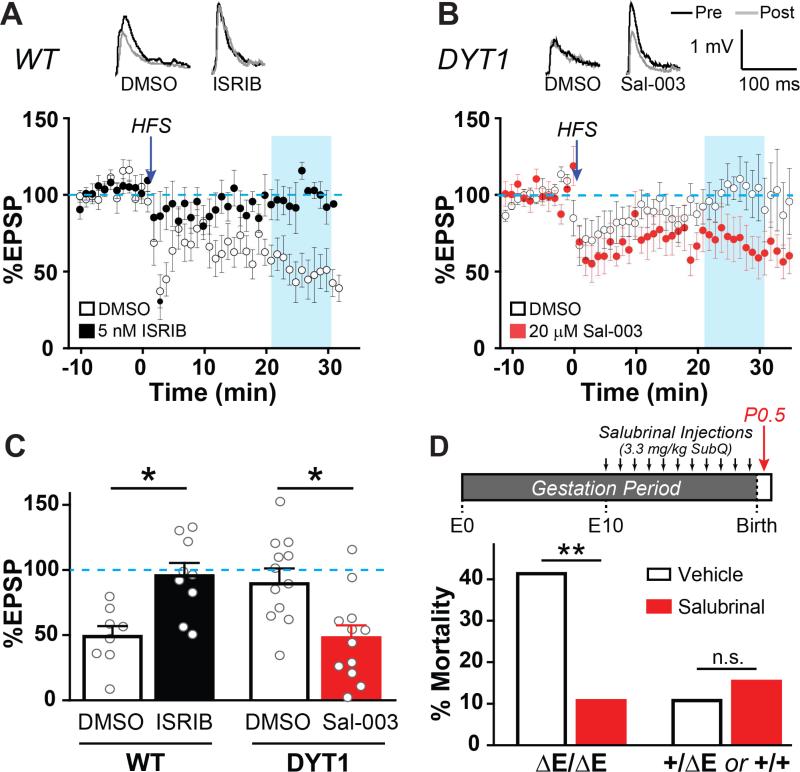Figure 4. Enhancing eIF2α signaling rescues deficient corticostriatal LTD in heterozygous DYT1 knockin mice and improves neonatal survival of homozygous DYT1 mice.
(A) Long-term depression (LTD) of corticostriatal synapses from WT mice in the presence of 5 nM ISRIB (black dots) or vehicle control (white dots). LTD was induced by 4 trains of 100 Hz stimulation in cortex layer V (HFS, see Experimental Procedures). n = 8 slices/4 mice (vehicle) or 9 slices/4 mice (ISRIB). Traces above graph – Representative excitatory postsynaptic potentials (EPSPs) recorded before HFS (black) or 21 min post-HFS (gray).
(B) LTD of corticostriatal synapses from DYT1 mice in the presence of 20 μM Sal-003 (red dots) or vehicle control (white dots). n = 12 slices/7 mice (vehicle) or 12 slices/8 mice (Sal-003).
(C) Mean magnitude of LTD in (A) and (B). Data in blue shaded boxes in panels (A) and (B) (minutes 21-31) were averaged. *, p < 0.01 by two-tailed Mann-Whitney U-test. Data are presented as means ± S.E.M.
(D) Top – Schematic depicting experimental workflow. Bottom – Perinatal survival after in utero salubrinal exposure. n = 29 vehicle- and 28 salubrinal-treated homozygous pups and 65 vehicle- and 91 salubrinal-treated pooled heterozygous/WT pups. No effect on mortality was observed for WT or heterozygous genotypes, so results were combined to simplify presentation.
**, p < 0.01 by Chi-square test.

